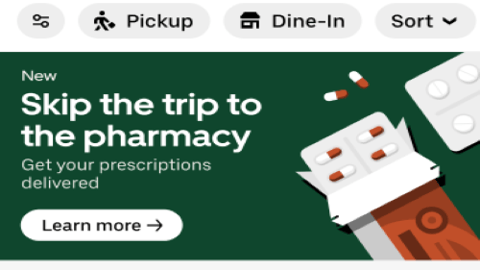Desire for Delivery Not Going Away: New Report
Long thought of as a luxury, delivery service has skyrocketed during the COVID-19 pandemic to become a necessity for many consumers — and therefore, retailers. Workforce management company Motus has released its "2021 State of Delivery Report," which reveals key data related to these current delivery trends.
“Consumer preferences have steered commerce away from in-person shopping over the course of the pandemic," said Ken Robinson, market research manager for Boston-based Motus. "Over the last year, for example, nearly 24 million households increased their use of grocery delivery services in 2020. Although consumer preferences may shift again as the year unfolds, the desire for convenience is not going away. Delivery services offer businesses across industries a way to satisfy this important consumer preference.”
Among one of the consumer trends, the Motus report discovered that grocery shoppers have been planning ahead more than ever: 86% of Americans purchased snacks a week or more ahead of the Big Game, many using grocery delivery services for safety and convenience.
As the pandemic placed restrictions on in-person dining experiences, the report found that sales for meal delivery services collectively grew 164% in 2020. Last year alone, more than 45 million Americans used a food delivery app, representing a 25% year-over-year increase.
As takeout and delivery become a more dominant part of the American routine, 68% of consumers reported that they're more likely to purchase takeout from a restaurant than before the pandemic. With 17% of restaurants in the United States forced to shutter their doors, the dining industry also experienced a massive evolution in the way that they conduct business. In 2020, two in five restaurants began offering food delivery services because of pandemic-related closures.
Adoption expanded beyond the traditional focus on food. Retail, pharmacies and convenience stores all exploded into the delivery scene. For example, Motus found that convenience stores like 7-Eleven and CVS experienced significant sales through third-party delivery app sales, which escalated 346% in 2020.
Additionally, Walgreens recently expanded its delivery services with Instacart to roll out the service nationwide to nearly 8,000 stores.
Meanwhile, Uber Technologies Inc. expanded its on-demand prescription delivery to one of the largest U.S. metros: New York City.
However, the Motus report cautioned that companies invested in food delivery might be overlooking an internal necessity — better working conditions for delivery workers. The report discovered that consumers are overwhelmingly willing to support improved working conditions for delivery workers employed by third-party delivery platforms. For instance, 55% of customers are willing to pay an additional 10% in fees and 82% are willing to wait 10% longer for their orders from a platform that offers better working conditions.
“Improving delivery experiences and working conditions for drivers is vital to the industry’s continued growth,” said Robinson. “One frequently overlooked opportunity to improve working conditions is taking an accurate approach to mileage reimbursement. Delivery drivers use their personal vehicles, one of their most valuable personal assets, to perform their job duties. However, the cost of using this asset depends almost entirely on the delivery area. For example, driving costs in the Chicago metro area can vary by as much as 3.3% per mile due to variance in fuel, license and insurance costs. Reimbursing drivers using an approach that considers these individual geographic factors creates a substantial benefit for delivery workers.”
Motus’ platform and proprietary software aim to simplify the reimbursement and management of vehicle, device, work and living costs through personalized calculations.
Deerfield, Illinois-based Walgreens is included in the Retail Pharmacy USA division of Walgreens Boots Alliance Inc. The drug store chain operates more than 9,000 retail locations across America, Puerto Rico and the U.S. Virgin Islands, serving about 8 million customers daily. Walgreens is No. 4 on The PG 100, Progressive Grocer's list of the top food and consumables retailers in North America. Meanwhile, CVS Pharmacy, the retail division of Woonsocket, Rhode Island-based CVS Health, with nearly 10,000 locations, is No. 6 on PG's list, and Dallas-based convenience store operator 7-Eleven, which has more than 70,000 stores worldwide, is No. 23.






